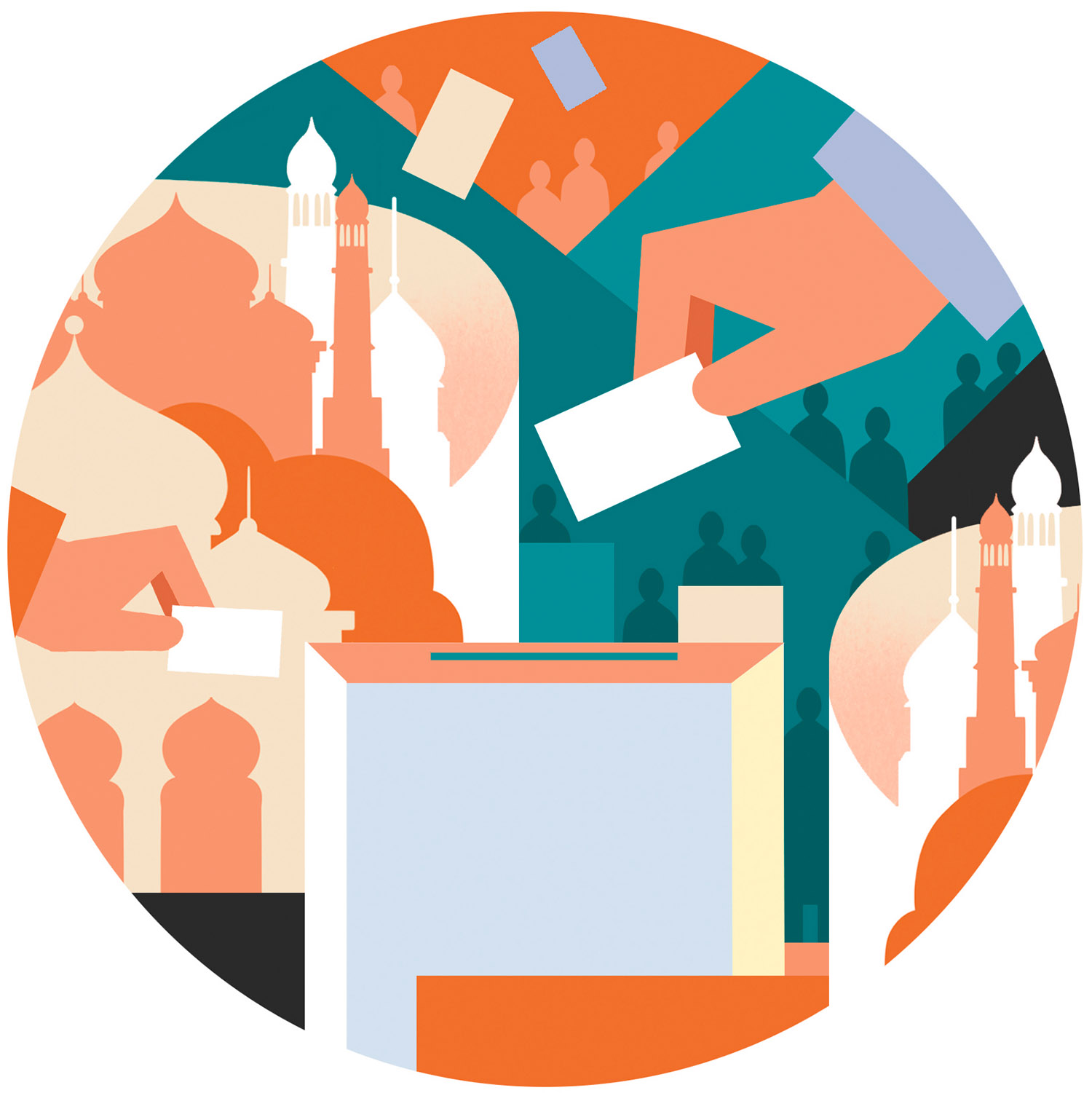Polls difficult to grasp amid mind-boggling diversity, regional issues, many political parties

It is election season in India. The focus of the media and observers is mostly on the central and northern Indian states of Uttar Pradesh, Bihar, Madhya Pradesh and Rajasthan, which collectively is known as the Hindi heartland, because most of the people there are Hindi language speakers.
The focus on the Hindi heartland is also because Indian Prime Minister Narendra Modi is contesting from a parliamentary constituency in Uttar Pradesh — Varanasi — and the four states account for 201 of the 543 seats in the Lower House (or Lok Sabha) of India’s bicameral parliament, and the ruling Bharatiya Janata Party-led Na-tional Democratic Alliance won 165 of those 201 seats in the last general elections in 2019.
The elections this time will be held in seven phases, which began on April 19 and will end on June 1, with the results scheduled to be declared on June 4.
READ MORE: Modi vs Gandhi campaign heats up as India begins 2nd phase voting
The poll scenario in India is a bit difficult to comprehend.
The reason is the mind-boggling diversity in India in terms of languages, regional differences and local issues, and scores of regional political parties that contest the elections.
The principal focus is on Uttar Pradesh because it sends 80 of the 543 members, or almost 15 percent of the total members, to the Lower House and used to be the traditional power base of the Indian National Congress (or simply the Congress), the oldest political party in India which gave India nine prime ministers including the first prime minister, Jawaharlal Nehru, his daughter Indira Gandhi and her son Rajiv Gandhi.
But the ruling NDA, which Modi represents, won 64 of the 80 seats in Uttar Pradesh and 39 of the 40 in Bihar in the 2019 elections. This time the opposition parties have aligned under the common umbrella of the Indian National Developmental Inclusive Alliance (INDIA) to bolster their combined strength, especially in the four critical states.
The other territories and states in which the BJP outperformed its opponents in the 2019 elections include Delhi, Haryana and Jharkhand in northern India, Maharashtra and Gujarat in western India, and Karnataka in southern India.
The BJP won all the seven parliamentary seats in Delhi in 2019. But, this time, to give a tough fight to the BJP in Delhi, the Congress has stitched an alliance with the Aam Aadmi Party (Common Man’s Party), the ruling party in Delhi union territory.
In South India, the Congress wrested power from the BJP in Karnataka state in the 2023 assembly election, strengthening its clout in the state which is home to the Indian “Silicon Valley” of Bangalore. Thus the poll battle in Karnataka, where the BJP was in power and had won 25 of the 29 Lower House seats in 2019, promises to be fierce this time.
The BJP, despite being in power at the center, has little presence in the other southern Indian states: Tamil Nadu, Kerala, Telangana and Andhra Pradesh.
In the eastern Indian state of West Bengal, the BJP had sprung a big surprise in the last elections by winning 18 of the 42 Lower House seats, with the state’s ruling party, the All India Trinamul Congress, bagging 22 seats. The poll battle in West Bengal should be intense this time.
The Modi-led BJP came to power in 2014 by promising to end corruption, check price rise, create millions of jobs, fight terrorism and boost economic growth.
It retained power in 2019 by promising to maintain the growth momentum (which critics say never existed) and claiming it had taught Pakistan a “valuable lesson” for “orchestrating” a terrorist attack in Pulwama and Kashmir, in February 2019, in which 40 security personnel were killed.
ALSO READ: Voting begins in India for first phase of general elections
However, the BJP this time faces public criticism for being corrupt after India’s Supreme Court ruled that an electoral bond program, which the Modi government in-troduced in 2017 and benefited the most from, was “illegal” and “unconstitutional”.
Making aggressive Hinduism, which glorifies the past, its main poll plank, the BJP is seeking votes for building a temple to the Hindu deity Rama at Ayodhya in Uttar Pradesh and for “handing out 5 kilograms of free food grains to 800 million families” and periodically transferring small amounts of money to their bank accounts.
The opposition INDIA bloc says that in the 10 years of the Modi government, unemployment has increased drastically, inflation has spiraled out of control, farmers have become poorer instead of earning twice as much as they used to, as Modi had promised, wealth/income disparity has worsened and many minority community members, especially Muslims, have been attacked, killed and humiliated.
Only the June 4 results can tell us which party or coalition of parties has the ears of the people.
The author is a veteran independent journalist, author and media educator based in India.
The views do not necessarily reflect those of China Daily.


